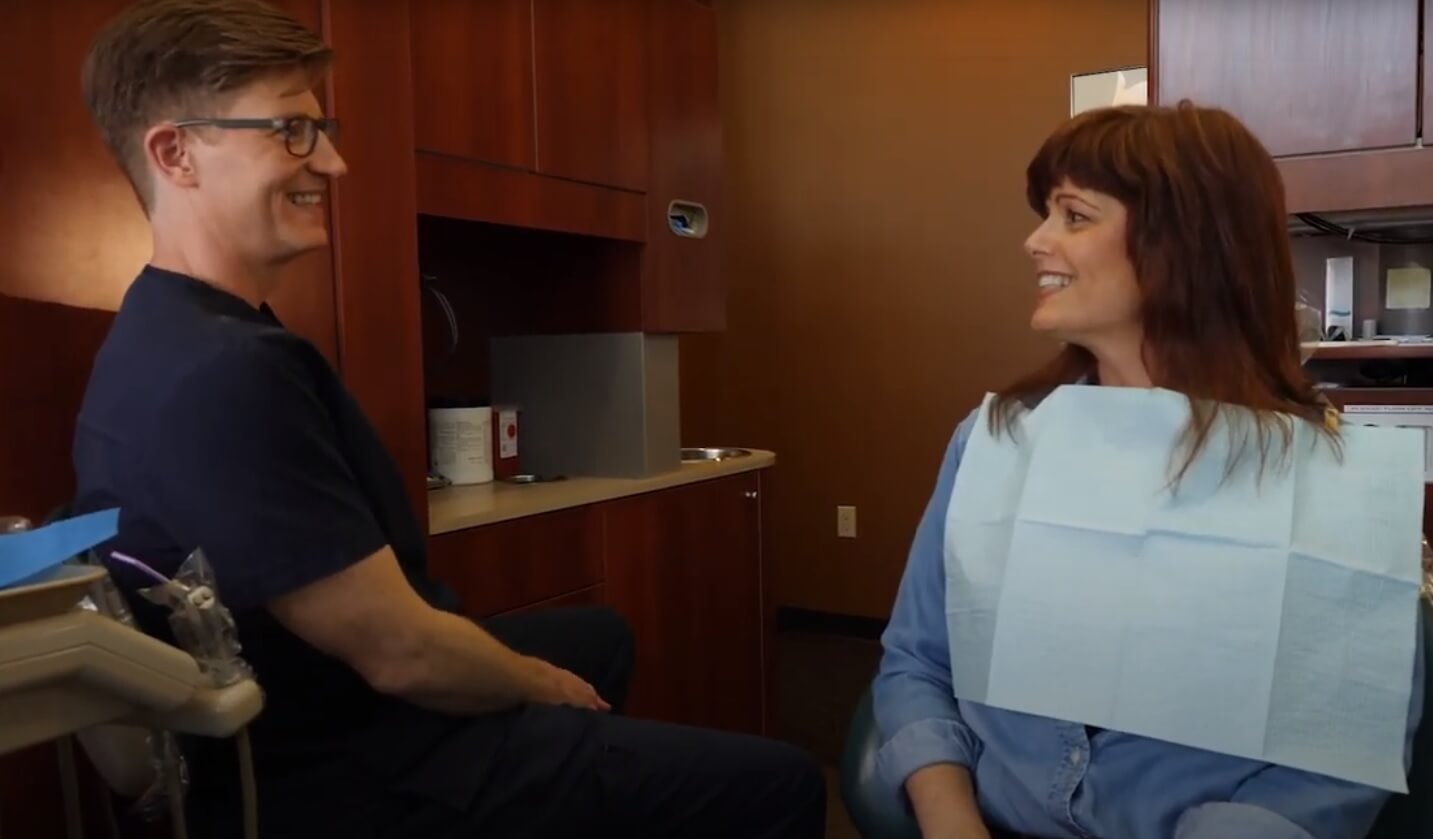Root canals are a common dental procedure that can save your natural teeth and alleviate excruciating pain caused by infected or damaged tooth pulp.
The procedure, despite its complexity and varying factors such as tooth anatomy or infection presence, usually takes 30 minutes to two hours on average.
In this article, we’ll not only answer the burning question of how long a root canal takes, but we’ll also delve into the entire process step-by-step, alleviating any fears or doubts you might have.
Key Takeaways
- Root canals are a crucial dental procedure to save your natural tooth. They’re not as scary as they sound.
- The process involves removing the infected pulp, cleaning and shaping the canal, then filling and sealing it.
- A typical root canal treatment takes between 30 minutes to two hours per session. But factors like the case’s complexity or the tooth’s location can affect this time frame.
- Complex cases may require multiple appointments or an endodontic specialist’s expertise. So be prepared for that possibility too!
- Maintaining good oral hygiene and following post-treatment instructions will help speed up recovery after your root canal treatment.
What is a root canal?
A root canal, also known as endodontic therapy, is an essential dental procedure that removes infected or inflamed pulp from inside your tooth. The primary goal is to alleviate pain and save your natural tooth while preserving as much healthy structure as possible.
The importance of root canal therapy
An untreated infected tooth doesn’t just cause discomfort; it poses risks such as spreading the infection to other teeth or even losing the affected ones permanently if not addressed promptly. Procedures like emergency root canals become crucial in these situations.
-
- Prompt action prevents further damage due to severe decay or infection.
- Saves you from potential loss of teeth.
- Eradicates chronic dental discomfort caused by repeated treatments in problematic areas.
This way, successful completion of root canal therapy lets you enjoy life without worrying about persistent oral health problems interfering with everyday activities.
When do you need a root canal?
One may question when it is important to make an appointment for a root canal treatment. The answer lies in understanding your tooth’s nerve and its health status.
The key here isn’t just about relieving pain but also saving that infected tooth from further damage. It’s all about maintaining oral hygiene and ensuring good overall health.
Symptoms indicating the need for root canal therapy
You don’t wake up one day needing a typical root canal procedure out of nowhere. Some signs and symptoms serve as red flags indicating potential issues with your teeth requiring immediate attention by an experienced root canal dentist.
-
- Persistent, intense pain while chewing or applying pressure on the area can suggest problems with damaged pulp inside your anterior teeth.
- If hot or cold temperatures cause prolonged sensitivity even after removing the temperature source, this may indicate the necessity for endodontic treatment.

Dangers of an untreated infected tooth
Avoiding these signals prolongs discomfort and can lead to serious complications, including abscesses and systemic infections impacting more than just our mouth.
Your body works as an interconnected system where neglecting an issue at any point affects the entire chain reaction, losing a healthy structure over time.
Hence, timely detection and addressing through restorative dentistry play a vital role in maintaining oral well-being.
What is the root canal procedure like?
A typical root canal treatment may seem daunting, but with advancements in dental technology and anesthesia, it has become more comfortable than ever.
-
- Evaluation: Includes examining your affected tooth and taking X-rays. The actual root canal therapy begins once these preparations are complete.
- Cleaning: Special tools are used to clean out decayed tissue from within the pulp chamber inside your natural tooth. This area is then disinfected and filled with a rubber-like material that helps preserve the healthy structure of the treated tooth.
- Sedation: To ensure you do not feel discomfort during this process, modern techniques such as sedation dentistry can help ensure you feel little-to-no pain throughout – no worse than getting a filling.
- Restorative: Afterward, there might be a need for further restorative work, including placing permanent crowns on top for protection, which would extend the average time spent at each appointment.
Every patient’s case varies, so the steps involved could change based on individual circumstances.
Factors affecting the duration of a root canal
Several variables influence the duration of the procedure, including the complexity of your tooth structure, whether there is an infection present, and if it’s an emergency case.
1. The complexity of tooth structure
Your tooth anatomy significantly affects how long you’ll be sitting in that dental chair during a typical root canal treatment. For instance, molars have multiple roots with one or two pulp chambers each – making them trickier to handle than anterior teeth.
A more intricate natural tooth structure could mean extra time cleaning these areas effectively during endodontic procedures like root canals.
2. Infection presence
If you have an infected tooth requiring immediate attention from your dentist, this will add more time. Root infections often necessitate additional steps, such as draining abscesses or administering antibiotics, before proceeding further into restorative dentistry practices like filling and capping teeth.
3. Emergency cases
An unexpected damaged pulp situation might require urgent care, which extends the average time needed for completion compared to non-emergency cases where everything goes according to plan without any hiccups along the way. Emergency scenarios usually involve tackling complications not anticipated within standard treatments, thus extending timelines accordingly.
Understanding some complex cases
The duration of a root canal procedure can vary significantly, especially when dealing with more challenging situations.
Complicated tooth anatomy
Dental anatomy is as unique as fingerprints – no two people have identical tooth structures. Some teeth may possess multiple roots or unusually shaped pulp chambers, which could make cleaning and shaping during root canal therapy quite challenging. In such instances, additional time would be required to ensure thorough treatment.
Infections and abscesses
An infected tooth untreated for an extended period often results in inflammation around the affected area, forming pus-filled abscesses at the tip of your natural tooth’s root system. This complicates and extends your typical root canal procedure since it necessitates emergency intervention followed by antibiotics before moving forward with restorative dentistry procedures like dental crowns.
Potential Time Extension for Complex Cases
The average extension due to complexities ranges between one to two hours per session or spans across weeks, depending on each case’s intricacy level. Though longer under such circumstances, root canals still aim to preserve maximum healthy structure while ensuring patient comfort through options like sedation dentistry.

Tips for reducing treatment time
Caring for your treated tooth post-procedure is pivotal in managing potential discomfort and ensuring successful recovery after root canal therapy. You must follow all instructions provided by your endodontist for optimal healing results.
1. Maintain good oral hygiene
Good oral hygiene is key to any dental procedure’s length – including root canals. Regular brushing with fluoride toothpaste, flossing daily to remove plaque from between teeth where toothbrush bristles cannot reach effectively, and using mouthwash are all excellent habits to maintain. These simple steps help prevent complications like infections or decay which may extend treatment time.
2. Promptly address dental problems
If an infected tooth or sensitivity issue rears its ugly head at home – don’t wait around hoping it will disappear on its own. Seek immediate attention from a qualified root canal dentist. Early detection often leads to simpler procedures taking less time than major treatments, such as extensive root canal therapy, due to severe damage caused by delaying professional intervention.
3. Open communication with your dentist
The significance of open communication during a common dental procedure should be considered. Discussing openly with your practitioner about pain-free root canals causing discomfort allows flexibility in their approach, saving valuable procedural time while relieving pain more efficiently.
4. Pre-treatment preparations & post-treatment instructions
Lastly, adherence to pre-treatment preparations (like prescribed antibiotics) and post-treatment instructions are also important. Following these guidelines carefully ensures optimal recovery speed minimizing chances of potential hiccups requiring additional visits, thus reducing the overall timeline significantly.
Preserving smiles with root canals
Root canals are a vital dental procedure that can save natural teeth and alleviate excruciating pain caused by infected or damaged tooth pulp.
Understanding the signs of a root canal and seeking professional attention can prevent further complications. Complex cases may require additional time and specialized expertise. Following post-treatment instructions and maintaining good oral hygiene, patients can help speed up recovery after the procedure.
If you have any concerns about how long a root canal takes or if you suspect you might need one, Soundview Family Dental is here to help. We offer top-notch dental procedures with patient comfort in mind. Contact us today!


